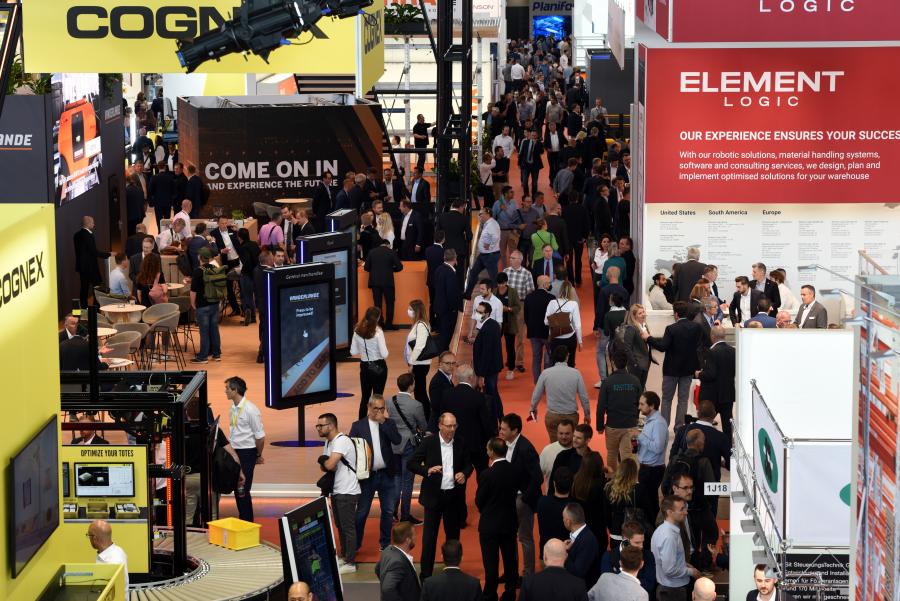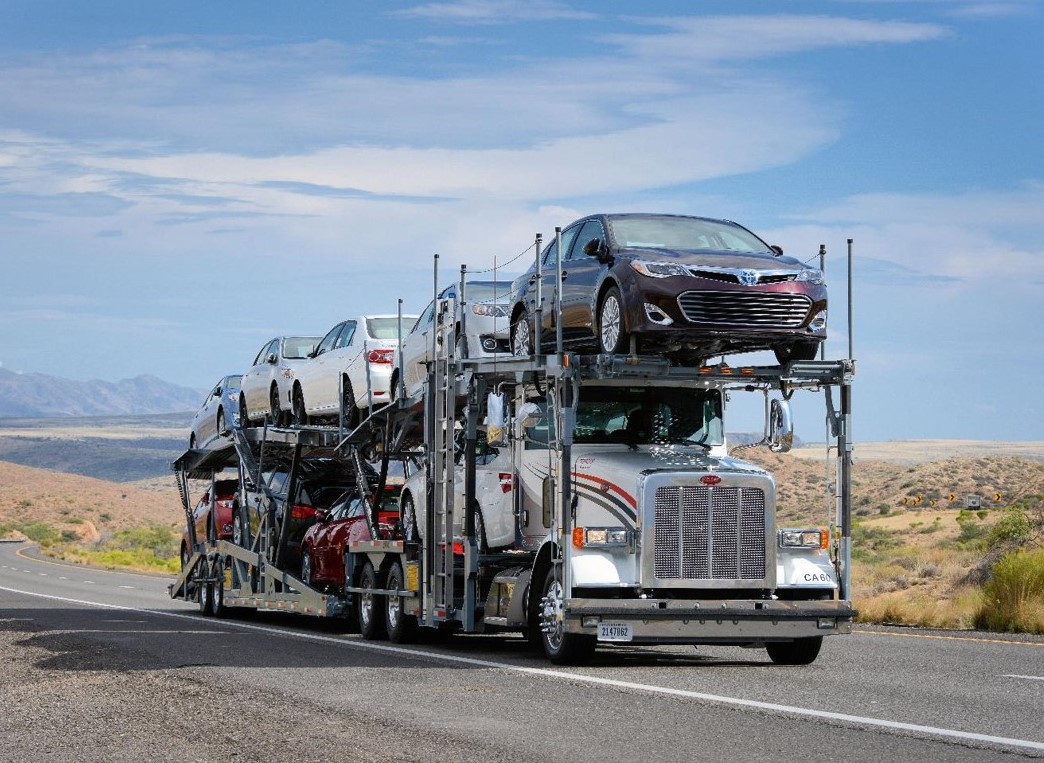Continuing with our run-through of each of the IFOY Award nominated finalists ahead of the winners announcement on 30th June at BMW World, we look at the SYNAOS IMS Vehicle Localization solution from SYNAOS.
IFOY Category: Special of the Year
Description
The seamless localization of transport vehicles is one of the most important steps towards fully digitized, highly efficient intralogistics. As soon as the position of every manually guided vehicle is known at all times, numerous new potentials arise: Important KPIs such as fleet utilization can be recorded, heat maps can be created and layouts can be optimized. In addition, drivers can be navigated optimally through production facilities and logistics centres, with delays being detected at an early stage. Furthermore, flexible, near real-time transport order planning can be realized. Also scan-free processes are made possible in this way, further simplifying workflows.
However, so far these and other use cases are not or only very rarely implemented – previous localization solutions are simply too expensive and it is not possible to achieve any savings. SYNAOS therefore pursues a modern approach: Intelligent software combined with cost-effective hardware allows precise and robust vehicle localization. For this purpose the sensor kit, which holds a stereo camera and a powerful embedded computer, is attached to the vehicles. This comparatively inexpensive combination enables the implementation of many use cases that were previously unprofitable.
Innovation
Current approaches for localizing vehicles in intralogistics are based on UWB (ultra wide band) or LIDAR (light detection and ranging). However, both techniques are associated with high costs – they require high and long-term investments. UWB requires a huge infrastructure investment and is very difficult to change or extend. In addition, the accuracy of localization depends on the illumination on site. LIDAR on the other side is achieving a very high accuracy. But this is not necessary for 95 percent of the applications in intralogistics. Another disadvantage is the high commissioning effort, because a map has to be created first.
SYNAOS IMS – Vehicle Localization, on the other hand, uses cameras and a technology called “visual odometry”. This technology is known from the fields of robotics and autonomous driving and is applied in logistics for the first time according to SYNAOS. In addition, SYNAOS uses simple markers at frequented locations in the hall so that the system has a global reference from time to time. This makes the installation of the system simple and commissioning uncomplicated, as no map has to be created. Only some markers are needed and the environment can change at any time without affecting the localization.
Market relevance
Every intralogistics vehicle providing power supply and a mounting option can be equipped with the SYNAOS IMS – Vehicle Localization, enabling precise localization in real time. Thereby, complete fleets can be digitized retrospectively. The system increases the efficiency of fleets and saves costs. The market for this solution is therefore huge: In 2020, about 1.5 million forklifts were produced. In addition, there is a correspondingly high number of already existing vehicles in the field. But very few of these vehicles already have their position recorded, nor are they digitally mapped.
Upgrading manual transport systems with the localization solution from SYNAOS is also highly relevant for the mixed operation of autonomous and manually guided vehicles. The entirety of transport orders for intralogistics can be controlled precisely and more efficiently. In addition, autonomous guided vehicles can be better controlled with known positions of the manually guided vehicles. For example, they can be slowed down when a forklift comes close, avoiding an emergency stop at an intersection. Enabling or improving the mixed operation of manual and autonomous vehicles also supports the gradual automation of intralogistics processes.
Main customer benefits
Customers benefit from easy-to-use, real-time localization for any intralogistics vehicle. However, SYNAOS IMS – Vehicle Localization is not only quickly installed, but also easy on the budget. Despite a comparatively low price, the solution achieves a very high accuracy. The position of the vehicle is calculated by strong computer vision algorithms from the images of the camera. Apart from an accelerometer, no other input sources are required. The complex creation of a map is also not necessary, since SYNAOS IMS – Vehicle Localization additionally uses simple markers for orientation, which are placed approximately every 100 meters in the environment. The solution is therefore extremely flexible and can be used in any intralogistics scenario.
All image processing takes place locally on the embedded computer – no sensitive data needs to be transferred to the cloud. The image data captured by the camera is immediately discarded after processing. Furthermore, communication is always transparent and future-proof thanks to compatibility with a standardized industrial interface.
Summary
The position of forklifts and other manually guided vehicles in intralogistics is usually unknown. This is now changing with SYNAOS IMS – Vehicle Localization: A camera-based sensor kit for the cost-efficient localization of manually guided intralogistics vehicles. SYNAOS uses state-of-the-art computer vision technology as enabler for its accurate and robust location system that is easy to install and scale.
CLICK HERE to watch a video.
IFOY TEST REPORT
What good is all the digitalisation if there are always “blind spots” in the company. One such blind spot is the fact that most of the forklift trucks that drive around in companies are still controlled manually and are therefore not digitised or only rudimentarily digitised. With the SYNAOS IMS – Vehicle Localisation system, a camera-based sensor kit ensures their cost-efficient localisation – using state-of-the-art computer vision technology.
SYNAOS is a software company, but has decided to build a small hardware. A small black box (19 x 12 x 6 centimetres) can be found at the demo set-up in Hall 3 of the Dortmund Trade Fair. It is screwed onto a child’s forklift and projects its images onto a screen.
The manufacturer has dedicated itself to eliminating the gaps in the localisation of manually controlled industrial trucks of all kinds: So it’s all about indoor localisation of industrial trucks. 95 per cent of companies have forklifts in use, but they are rarely well integrated into the value chain: Currently, only the transport order is digital; the forklifts themselves are not digitalised. As a result, there is no knowledge of where a forklift is located. There are forklift localisation technologies, but they are often not used. There is a reason for this: ultra-wideband or lidar technology are simply too expensive. Speaking of lidar: the system is already too accurate, as if one were shooting at sparrows with cannons.
With the new system from SYNAOS, which works with so-called “markers”, a Localisation-as-a-Service (LaaS) tool, it’s different: Everything is already included in the price and the detection comes to an accuracy of about 25 centimetres. So it’s not just about the “little box” on the test set. For 1,980 euros a year per truck, that would be relatively low costs for admittedly standardised electronic components that can easily be bought at electronics stores: But the intelligence is in the software – plug and play.
You can create transparency in a flash with SYNAOS IMS – Vehicle Localisation: Where in the warehouse is busy? What are the braking distances? Where are people driving around without a driving order? Even the truck that is always running late can now finally be pointed out. In short: you can observe the fleet utilisation exactly. And a very big USP compared to the conventional storage method is that the forklift only reports the position where it has driven a pallet; scanning the pallet or the products on it is no longer necessary.
SYNAOS expects CE certification in a few weeks. The already mentioned indoor accuracy of 25 centimetres is achieved with markers every 100 metres. The “little black box” operates with a power consumption of 7 watts and transmits its camera data – 15 images per second – via WiFi for evaluation using computer vision algorithms. Apart from an acceleration sensor, no other input sources are required. In times of increasingly important cybersecurity, this is perhaps not entirely unimportant: the entire image processing of the system takes place locally on the embedded computer; no sensitive data need to be transferred to a cloud. After the camera’s image data has been processed, it is immediately discarded.
IFOY Test Verdict
The simple real-time localisation of all types of industrial trucks with the help of this very convincing localisation system helps customers on their way to the complete digitalisation of intralogistics. It is very easy to record fleet utilisation, but also to create heat maps for critical points in the warehouse or optimise warehouse layouts. The basic tenor: inexpensive hardware works together with intelligent software. Every industrial truck with a power supply and a mounting option can be equipped with the SYNAOS IMS – Vehicle Localisation sensor kit – a huge market.
IFOY INNOVATION CHECK
Market relevance: The localisation system was developed in order to retrofit forklifts with a sufficiently accurate, cost-effective and scalable solution for position tracking and to integrate it into digital control processes. With an annual production of approximately 1.5 million forklift trucks and a minimum service life of 10 years, there is a very large market with a high demand for digitalisation of all players in the warehouse, also driven by the trend towards mixed operation with AGVs.
Customer benefit: Users benefit from the fast set-up, almost without adapting the infrastructure, as well as the easy usability of the system. As a result, the solution scales from quantity 1 without significant investment costs, as it is offered as Localisation-as-a-Service at a reasonable price. In use, SYNAOS enables the user to perform statistical analyses for fleet utilisation and process optimisation, digital order control and monitoring, optimised driving behaviour of AGVs in mixed operation, navigation of forklifts in the warehouse as well as automatic scanning processes for goods booking. Unlike compact UWB (ultra-wideband) systems, however, SYNAOS can only locate vehicles, not people.
Novelty: The localisation of intralogistic vehicles on the basis of visual odometry, i.e. relative localisation via stereo vision with occasional absolute referencing via markers, is a novelty in the industry. However, the technology itself is not completely new and has already proven itself in autonomous driving. Advantages over the usual laser scanner-based methods with a map are the lower costs as well as the simplicity and robustness of the approach even in highly dynamic environments. Compared to UWB-based solutions, the advantage lies in the low need for adaptation of the infrastructure and the low investment costs. The innovation value consists in a solution that is appropriately balanced between localisation accuracy (approx. 25 centimetres) and costs.
Functionality / type of implementation: The solid test setup of the sensor kit with integrated computing unit convincingly demonstrated the functionality of the system. The energy-efficient retrofit kit requires only a power supply and can be integrated via the WiFi infrastructure. SYNAOS offers its own order and fleet management, but can also connect to other systems via VDA 5050. The operating interfaces are user-centred and the closed sensor system does not disclose any images to the outside for data protection reasons, but will enable new additional functions in the future. It is still not clear how much maintenance is required with regard to contamination of the camera sensors.
Verdict: The forklift market is a lucrative market for SYNAOS in the long term. The customer benefit is high due to improved order status information, statistics and optimised traffic flow guidance. The novelty of the reliably and robustly implemented plug&play system is given in logistics.
market relevance ++
customer benefit +
novelty +
functionality / type of implementation ++
[++ very good / + good / Ø balanced / – less / – – not available]
For an overview of all the finalists, visit www.ifoy.org
CLICK HERE to find out more about SYNAOS.







